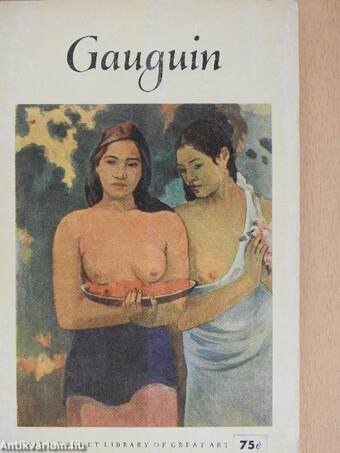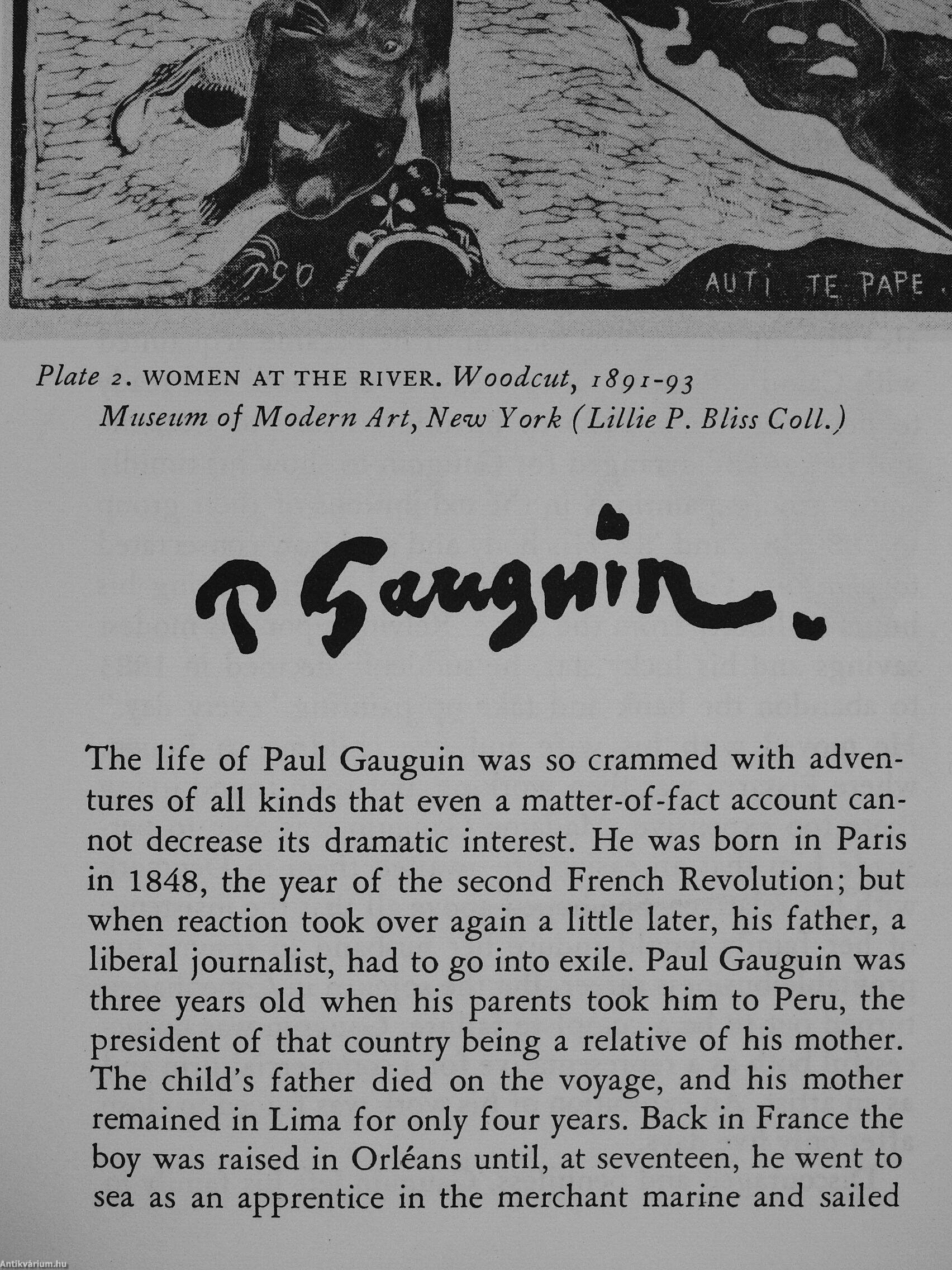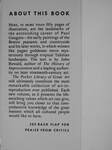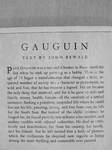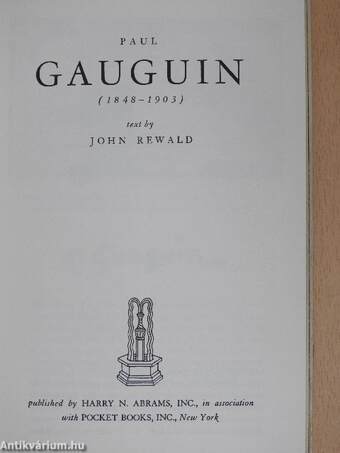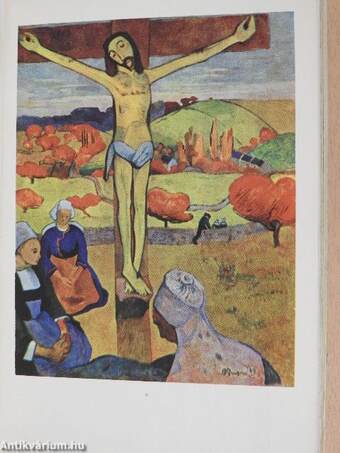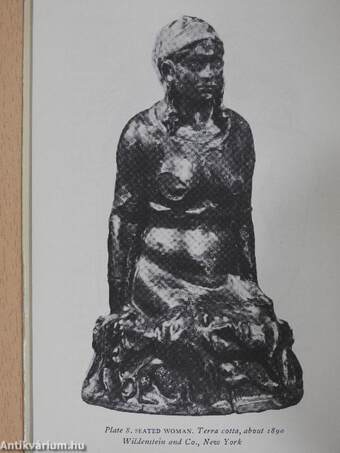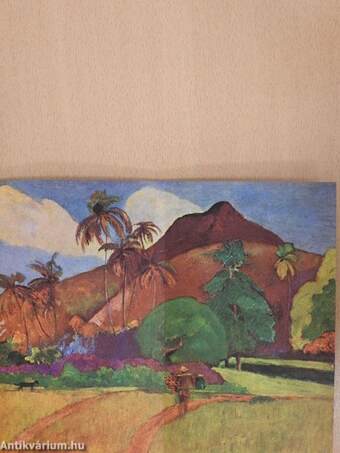1.067.053
kiadvánnyal nyújtjuk Magyarország legnagyobb antikvár könyv-kínálatát

VISSZA
A TETEJÉRE
JAVASLATOKÉszre-
vételek
Paul Gauguin
1848-1903
| Kiadó: | Harry N. Abrams, Inc.-Pocket Books, Inc. |
|---|---|
| Kiadás helye: | New York |
| Kiadás éve: | |
| Kötés típusa: | Varrott papírkötés |
| Oldalszám: | 72 oldal |
| Sorozatcím: | Pocket Library of Great Art |
| Kötetszám: | 15 |
| Nyelv: | Angol |
| Méret: | 17 cm x 11 cm |
| ISBN: | |
| Megjegyzés: | Színes és fekete-fehér reprodukciókkal. Kihajtható mellékletekkel. |
naponta értesítjük a beérkező friss
kiadványokról
naponta értesítjük a beérkező friss
kiadványokról
Előszó
TovábbFülszöveg
ABOUT THIS BOOK
Here, in more than fifty pages of illustration, are the landmarks of the astonishing career of Paul Gauguin—his early paintings of the Breton peasants and countryside and his later works, in which women like pagan goddesses move mysteriously through tropical Tahitian landscapes. The text is by John Rewald, author of The History of Impressionism and a leading authority on later nineteenth-century art.
The Pocket Library of Great Art will ultimately constitute the most remarkable collection of art-in-reproduction ever published. Each new volume, as it presents the life-enriching values which art can give, will bring you closer to that comprehensive knowledge of the great masters which all cultured people would like to have.
SEE BACK FLAP FOR PRAISE FROM CRITICS
I '
GAUGUIN
TEXT BY JOHN REWALD
Paul Gauguin was a successful broker in Pans--until the day when he took up painting as a hobby. TLsn 2.t the age of 35 began a transformation that, changed a staid,... Tovább
Fülszöveg
ABOUT THIS BOOK
Here, in more than fifty pages of illustration, are the landmarks of the astonishing career of Paul Gauguin—his early paintings of the Breton peasants and countryside and his later works, in which women like pagan goddesses move mysteriously through tropical Tahitian landscapes. The text is by John Rewald, author of The History of Impressionism and a leading authority on later nineteenth-century art.
The Pocket Library of Great Art will ultimately constitute the most remarkable collection of art-in-reproduction ever published. Each new volume, as it presents the life-enriching values which art can give, will bring you closer to that comprehensive knowledge of the great masters which all cultured people would like to have.
SEE BACK FLAP FOR PRAISE FROM CRITICS
I '
GAUGUIN
TEXT BY JOHN REWALD
Paul Gauguin was a successful broker in Pans--until the day when he took up painting as a hobby. TLsn 2.t the age of 35 began a transformation that, changed a staid, respected member of society into a character so picturesque, so wild and free, that he has become a legend. His art became the only thing that mattered, and for it he gave up wife and family, money, health, friends—all the comforts of a settled existence. Seeking a primitive, unspoiled life where he could live out his life, painting, loving, and free from care, he left for the South Seas. But instead of the idyllic existence he longed for, he found poverty, one sickness after another, and endless troubles with colonial authorities. He died in 1903, lonely and heartbroken, far from his country, his family, and his friends. But he left behind him a body of pictures which the civilization he despised now regards as being among the most thrilling and memorable ever painted. Vissza
Témakörök
- Életrajz > Művészet > Festészet, szobrászat
- Idegennyelv > Idegennyelvű könyvek > Angol > Művészetek > Festészet
- Idegennyelv > Idegennyelvű könyvek > Angol > Művészetek > Művészettörténet, általános
- Idegennyelv > Idegennyelvű könyvek > Angol > Életrajz > Művészet > Festészet, szobrászat
- Művészetek > Művészettörténet általános > Idegen nyelv > Angol
- Művészetek > Művészettörténet általános > Életrajzok > Festők
- Művészetek > Festészet > Korszakok, stílusok > XIX. század > Impresszionizmus
- Művészetek > Festészet > Korszakok, stílusok > XIX. század > Egyéb
- Művészetek > Festészet > Életrajzok > Külföldi
- Művészetek > Festészet > Idegen nyelv > Angol
- Művészetek > Festészet > Általános festészet > Története



